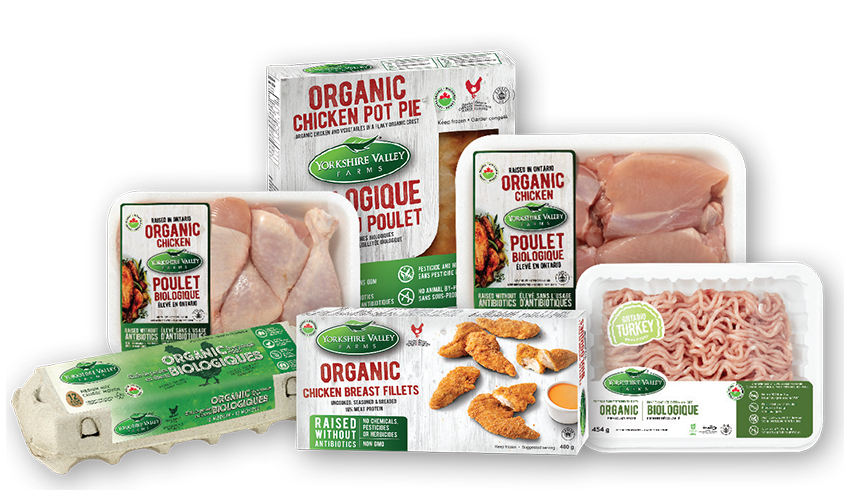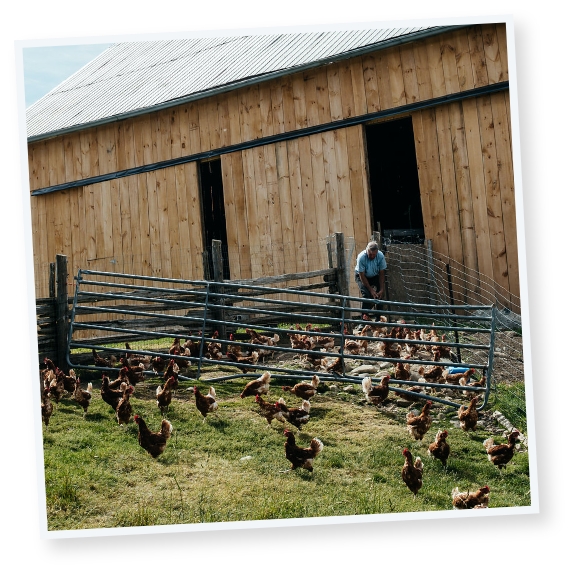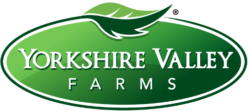What does organic mean?
If a product is certified organic, it means it has been inspected by a federally recognized certification body and can display the Canada Organic Badge. Think of the organic certification standards like a code of conduct – a strict set of practices and protocols followed when bringing food products to market.


Canada’s organic standards are among the most recognized in the world
The standards lay out the specifics of organic production, including how livestock must be housed, fed, transported and processed; how specific crops and produce are to be grown, how pests and diseases are to be treated; which substances, methods and ingredients may and may not be used; and what environmental factors must be taken into consideration.
The standards also place strict limits and prohibitions on the use of toxic and persistent pesticides; synthetic fertilizers; the routine use of drugs, antibiotics or synthetic hormones; animal cloning; genetic engineering (“GMOs”); sewage sludge (“biosolids”); and irradiation. Organic standards also forbid the use of artificial food colours, flavours, sweeteners, preservatives and many other processing aids and ingredients in processed foods.
When you choose a Yorkshire Valley Farms organic product, you know that it is:




Cultivating A Better Way To Good Food
Our approach is simple – raise food with good intentions and do it through sustainable practices, so you always know what you’re serving up.
It all starts with planting non-GMO seeds in healthy soils.
Plants that are never treated with herbicides, pesticides or synthetic chemicals. Crop rotation, cover crops and use of compost help build soil health and support biodiversity.
These healthy crops create our proprietary mix of vegetable-grain organic feed, free from animal by-products.
Day-old chicks arrive at the farm and are raised in lower-density flocks, giving them almost twice the space to move about. The animals are not treated with antibiotics, and instead rely on their own immune systems to keep them healthy.
The chicks live in cage-free barns that offer access to natural sunlight, fresh air ventilation, and enrichments. They are provided with eight hours of continuous darkness to encourage a natural sleep cycle.
The animals have seasonal access to organically managed pastureland. The environments both inside and outside the barn are intended to encourage natural behaviours like spreading their wings and dust bathing.
When it is time to leave the barn, consideration is taken at each step. We factor in transportation time, temperature and strict animal welfare standards to reduce handling and minimizes stress.
The animals are harvested following organic standards. Everyone who comes into contact with the birds is trained in humane animal handling practices. We use Controlled Atmosphere Stunning (CAS), considered the leading humane approach by many animal welfare advocates.
We strive to source environmentally mindful packaging, always looking for ways to reduce our material needs and to find improved recyclable options across our products.
When you reach for Yorkshire Valley Farms products, you’re supporting a sustainable food system that helps build resilient communities. Best of all, you get delicious organic food without compromising your values.

We believe doing better tastes good
We’re working to show that organic regenerative farming isn’t just possible, but profitable, and can result in sustainable food systems that benefit all those involved. Through our network of committed organic farmers, we work to steward over 3,000 acres of land under organic practices. Our goal is to build long-term resilience of the farms through the development of healthy soils and to produce healthy food for generations to come.
Let’s talk soil
Imagine soil as the Earth’s microbiome. By feeding it a variety of plants and bacteria, in the form of cover crops, crop rotation, and compost, the health of the soil becomes richer and more nutrient dense. In turn, our food is grown in this soil that offers an abundance of nutrients and doesn’t need pesticides or herbicides and can sequester carbon out of the atmosphere and back into the earth.
How carbon is sequestered into soil by organic regenerative agriculture
- Grasses and cover crops pull carbon from the atmosphere during photosynthesis, and store it in its leaves, stems, and roots.
- As plants grow taller, their roots grow further into the ground and distribute the carbon deep into the soil where it is stored.
- As animals eat the cover crops, the roots shorten and the excess decomposes, storing atmospheric carbon as particulate organic matter in the soil. Over time, carbon improves the quality of the soil.
- Grasses and cover crops pull carbon from the atmosphere during photosynthesis, and store it in its leaves, stems, and roots.
- As plants grow taller, their roots grow further into the ground and distribute the carbon deep into the soil where it is stored.
- As animals eat the cover crops, the roots shorten and the excess decomposes, storing atmospheric carbon as particulate organic matter in the soil. Over time, carbon improves the quality of the soil.





